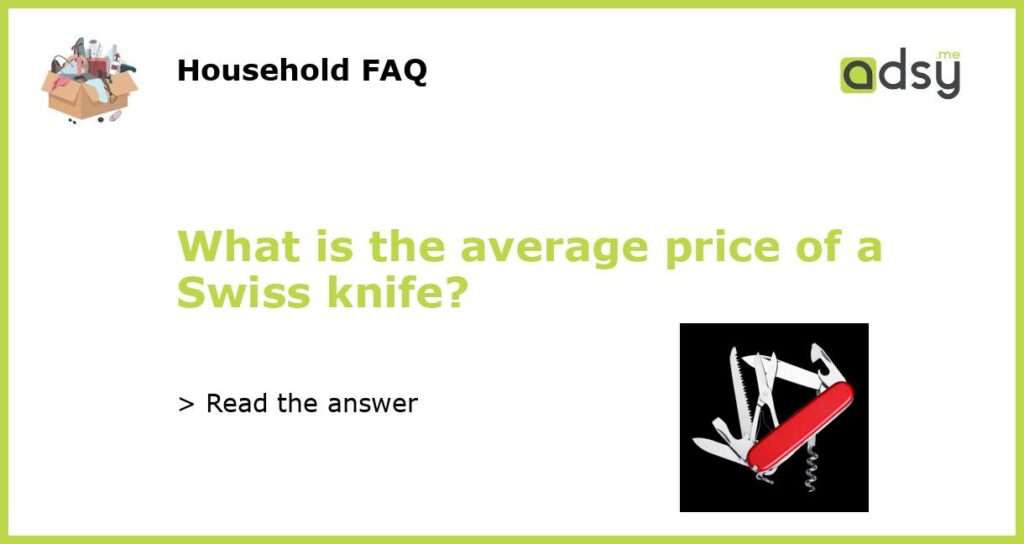Understanding the Factors that Influence the Price of a Swiss Knife
Swiss knives, with their versatile functionality and durable craftsmanship, have long been considered a must-have tool for adventurers, travelers, and outdoor enthusiasts. However, when it comes to purchasing a Swiss knife, the price can vary significantly depending on a variety of factors. In this article, we will explore the average price of a Swiss knife and the key factors that influence its cost.
The Brand Matters: Recognizing the Influence of Swiss Knife Manufacturers
One of the primary factors that can significantly impact the price of a Swiss knife is the brand behind it. Established brands with a long-standing reputation for quality, such as Victorinox and Wenger, tend to command higher prices due to their exceptional craftsmanship and reliability. The brand’s history, innovation, and market demand all contribute to the premium pricing. On the other hand, lesser-known and generic brands might offer similar features, but at a more affordable price point.
The Features: Assessing the Value of Swiss Knife Functions
Another crucial factor that impacts the price of a Swiss knife is the range of features it offers. The number and complexity of tools and functions integrated into the knife play a significant role in determining its cost. Basic Swiss knives often include a combination of blades, screwdrivers, can openers, and scissors. However, more high-end models may incorporate additional tools like toothpicks, tweezers, corkscrews, and even magnifying lenses. As the number of functions increases, so does the price of the Swiss knife.
The Material Matters: Evaluating the Influence of Swiss Knife Components
The choice of materials used in the manufacturing of a Swiss knife can significantly impact its price. High-quality steel, such as stainless steel and carbon steel, is commonly used for the blades and tools. The type and grade of steel can vary, with certain materials being more expensive than others due to their enhanced durability, corrosion resistance, and edge retention. Similarly, the handle material, which can range from plastic to wood or even rare materials like Damascus steel, can also influence the cost of a Swiss knife.
Special Editions and Limited Runs: Exploring the Impact of Rarity
Swiss knife manufacturers often release special editions and limited runs to cater to collectors and enthusiasts. These unique models may be inspired by popular themes, collaborations with famous designers, or significant events. Due to their limited availability and exclusivity, these special editions can command higher prices than regular models. Collectors may be willing to pay a premium to own a piece that stands out from the standard Swiss knife offerings.
The average price of a Swiss knife varies depending on various factors such as the brand, features, materials used, and exclusivity. Established brands with a reputation for quality tend to command higher prices, while lesser-known brands may offer similar features at a more affordable price point. The complexity and number of tools integrated into the knife also contribute to its cost. The choice of materials, both for the blades and handles, can significantly influence the price. Finally, limited editions and special runs cater to collectors and enthusiasts, often commanding higher prices due to their rarity. Ultimately, the price of a Swiss knife is reflective of its quality, functionality, and unique attributes.






